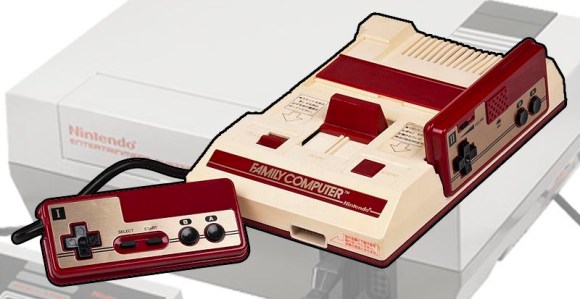
Work on the Famicom began in 1981, when Nintendo was already having success with its Game & Watch line of portable LCD games that doubled as clocks.
The project was at the behest of then-president of Nintendo, Hiroshi Yamauchi, who wanted “an arcade game that could be played on a home television set.” The task was given to Uemura and his very small team of three people.
Compared to the dozens of people working on Game & Watches, he saw little hope that Nintendo would care enough to embrace whatever he came up with. These machines were cheap and portable giving them a huge advantage over anything he could think of.
“I felt like an already beaten war general who had another mission sent from the top. I still have a notepad I used at the beginning of development. There was no hint of a future at that time, so all I wrote was pessimistic bitching. (laughs)”
[Masayaki Uemura]
Feeling that this project was doomed from the outset, Uemura and team decided to “borrow” some ideas from the already in-use Atari 2600 in the USA. However, that system failed to live up to arcade level quality and didn’t help them at all. But the Atari 2600 did teach them to lower their standards and they abandoned aiming to match the arcade’s quality. However, this project still had its share of hurdles to overcome. Most challenging was creating the system to meet the target retail price of 10,000 yen (2013US$99) or less. They had to make severe cuts to parts in order to get the price down to 14,800 yen ($146). These budget issues helped fuel the rumor that the Famicom’s distinct deep red color was chosen because it was the cheapest available.
“That’s a mistake. (laughs) On the contrary, at first we were going to use a low-cost steel body but we had to replace it with high-strength plastic because it was just too weak. The reason for the red color was simply the president’s order. He often wore a scarf with a similar color because he said it was his favorite. Looking at the president, it was easy to know what he would choose for the body design. That’s the truth! (laughs)”
As for other design peculiarities, the presence of a microphone on the second controller was done on a whim by Uemura and his team who weren’t sure what games would be developed for their would-be system. Uemura had the idea that the Famicom might be used as a home karaoke machine tapping into the then burgeoning karaoke fad in Japan.
The name “Family Computer” was chosen by Uemura himself. At that time Nintendo had its developers choose the name of its products rather than the marketing department. He often would hear the terms “personal computer” or “home computer” but liked the idea of a “family computer” and could envision a family gathered in the living room playing his machine together. Although the shortened “Famicom” came about organically in Japan, Uemura had been ahead of the trend thanks to some sage-like advice from his wife.
“When I told my wife about the name Family Computer she said ‘Why not just call it Famicom? Everyone’s just going to shorten it to Famicom anyway.’ I thought she had a good idea so I took it to my boss. He rejected it saying ‘Famicom? That makes no sense.’ (laughs)”
With all the details sorted, the rest is gaming history. And for middle-aged folks like me who can remember sitting with a Famicom or NES, it was more than the mind-numbing device our parents thought it was. It was a machine that could urge us to imagine.
“With our limited specs, it was a lot of hard work to make a machine with clumsy graphics compared to today’s systems. However, this gave room for the player’s imagination to roam. Nowadays, for better or for worse, graphics are as beautiful as if you’re watching a movie. You’re too influenced by the creator’s image of the world. But with the Famicom, each player has their own view of the game’s world, creating a deeper universe.”
Happy 30th birthday Famicom, and thank you Mr. Uemura.
Source: Shupure News via Hachima Kiko (Japanese)
Images: Evan-Amos – Wikipedia 1, 2, 3